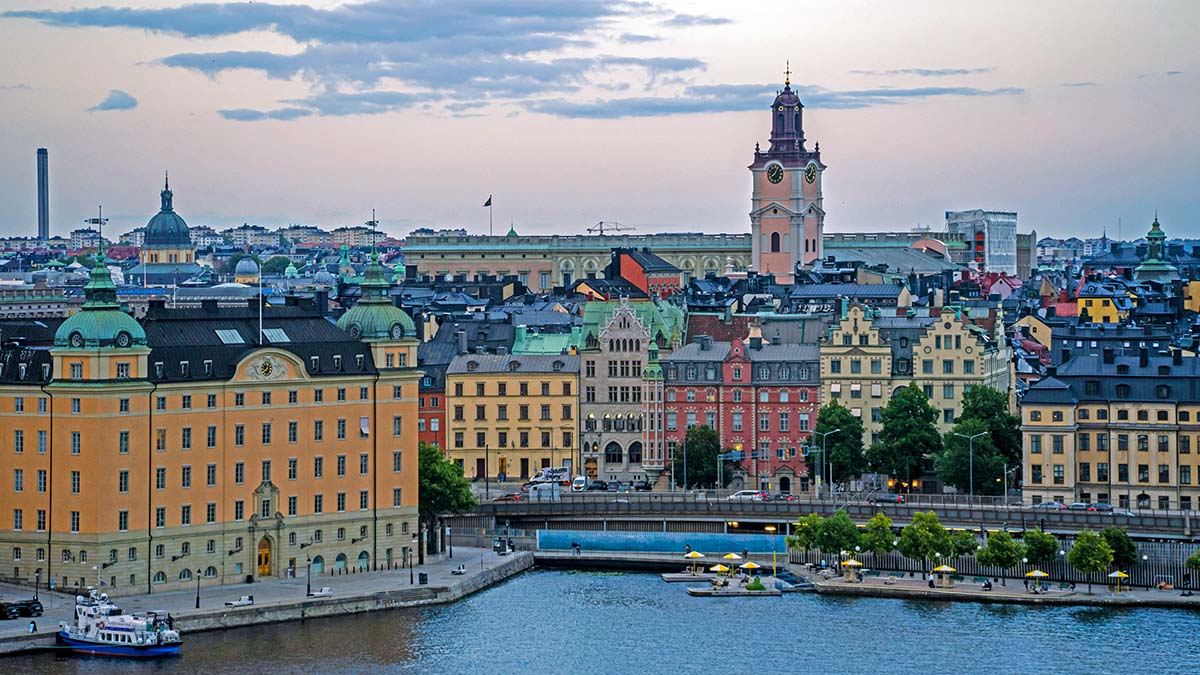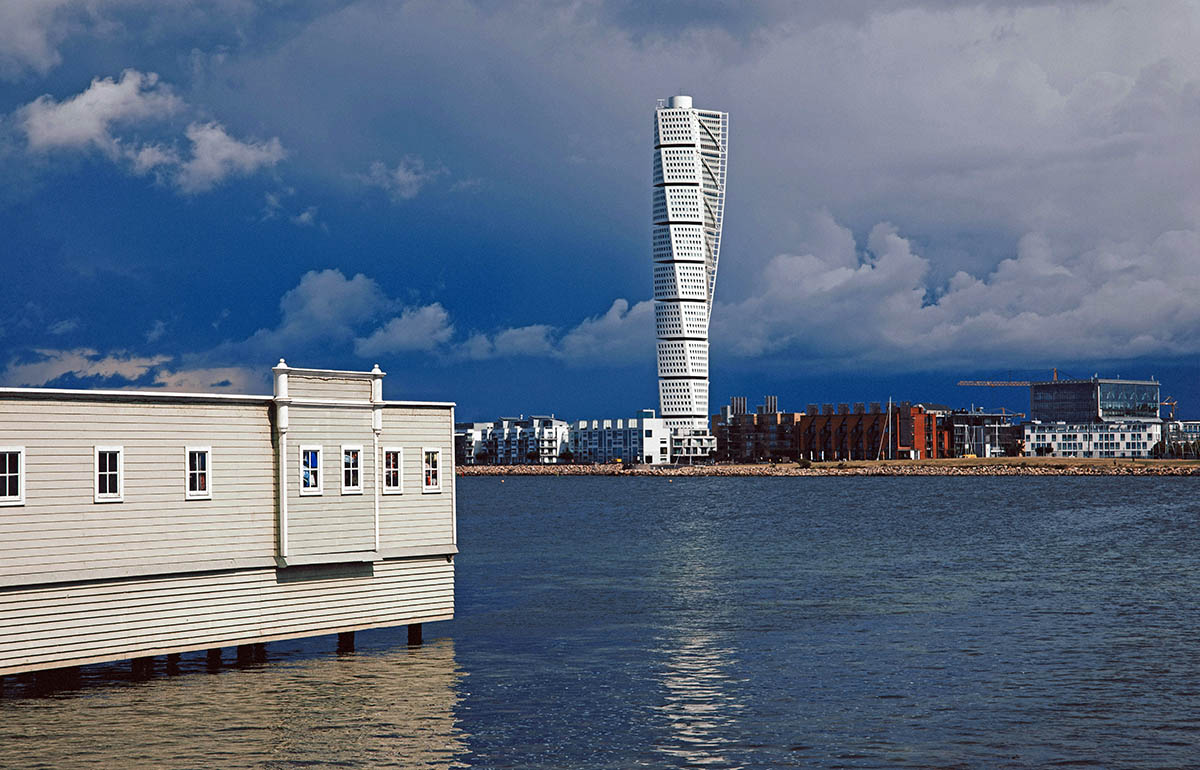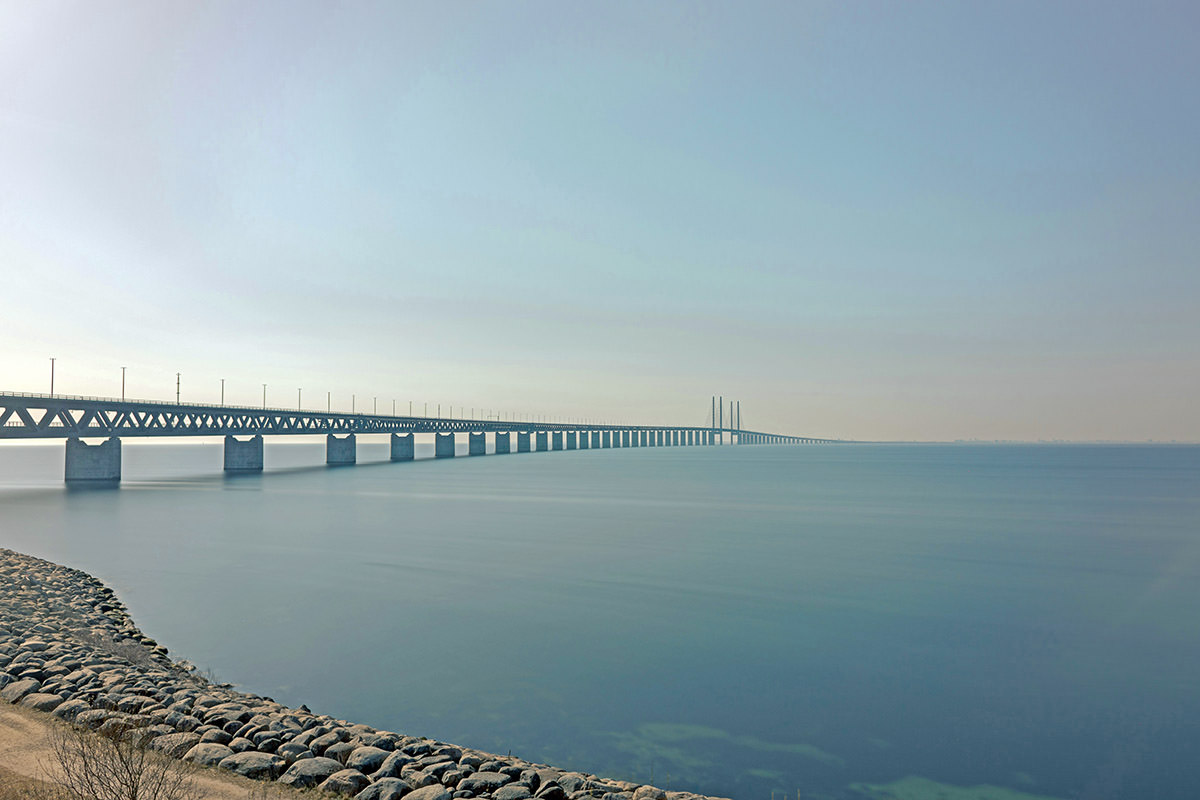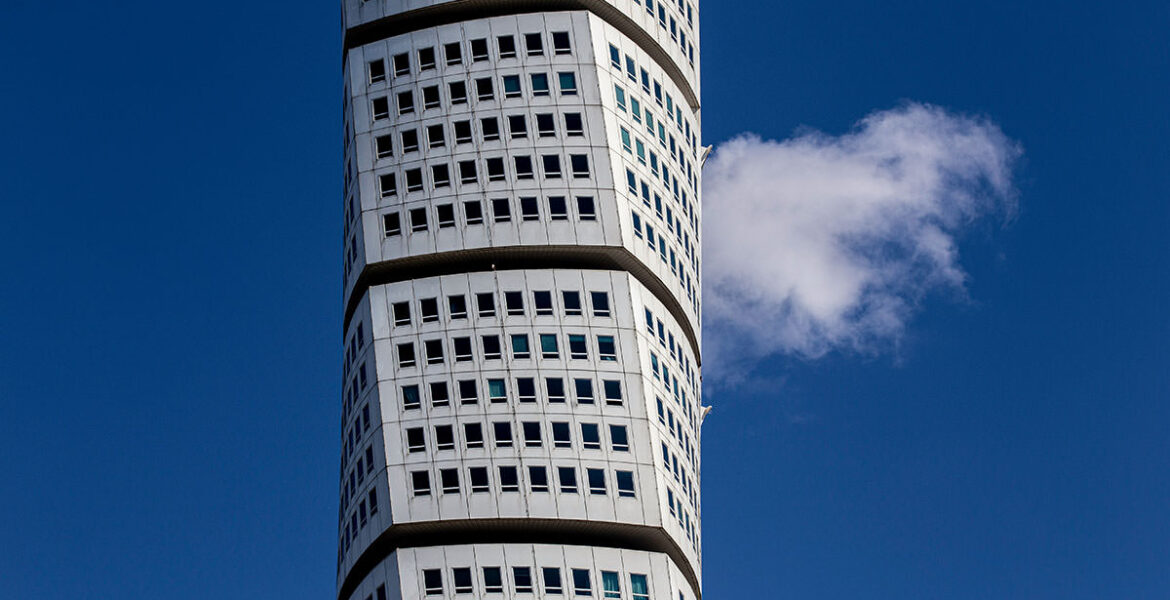Scandinavia, with its charming cities, rich history, and stunning landscapes, is a dream destination for any traveler. Among the region’s most captivating cities are Copenhagen, Malmö, and Stockholm – each offering its unique character, history, and culture.
Whether you’re exploring the canals of Copenhagen, the vibrant streets of Malmö, or the regal splendor of Stockholm, the journey between these cities reveals some of the most remarkable sights in Europe.
This article will guide you through the highlights of these three Scandinavian cities and offer tips on how to travel between them, including the best routes and experiences.
If you want to extend your Nordic experience, here's what you should include in your Scandinavian holidays!
How to Travel Between the Three Scandinavian Cities
The Scandinavian cities of Copenhagen, Malmö, and Stockholm are well connected by train, making it easy to travel between them and enjoy the best of what each has to offer.
Nothing beats the charm and tranquillity of a scenic train ride through Scandinavia
The Copenhagen to Malmö journey is quick and scenic, taking just 30 minutes to cross the Øresund Bridge, which connects Denmark and Sweden. The train ride provides stunning views of the sea and the city skylines, making it a pleasant way to travel.
For those traveling between Stockholm and Copenhagen, several train routes connect the two cities. The journey takes about 5 to 6 hours, offering a comfortable and relaxing ride through Sweden’s countryside. Passengers can enjoy spacious seating, free Wi-Fi, and scenic views along the way, making it a great option for those who want to relax and enjoy the landscape.
Alternatively, flights between the cities are quick and efficient, but nothing quite beats the charm and tranquillity of a scenic train ride through Scandinavia.

Stockholm: The Royal Capital
Stockholm, Sweden’s capital, is a city that blends history with modern innovation.
Located across 14 islands, Stockholm is often referred to as the Venice of the North due to its many canals and waterways.
The heart of Stockholm lies in Gamla Stan, the old town, where cobbled streets and colorful buildings transport visitors back to medieval times.
The Royal Palace, one of the largest palaces in Europe, is located here, and visitors can explore the royal apartments, the Treasury, and the Armoury. The Changing of the Guard ceremony, which takes place daily, is a popular attraction and offers a glimpse into Sweden’s royal traditions.

For those interested in Swedish history, the Nobel Museum in Gamla Stan is dedicated to the prestigious Nobel Prizes and the extraordinary individuals who have received them.
Stockholm is home to a wide array of other museums and galleries, such as the Vasa Museum, which houses the world’s only preserved 17th-century ship, and the ABBA Museum, dedicated to the famous pop group.
The city’s modern art scene is also impressive, with the Moderna Museet showcasing works by international and Swedish artists.
For a more interactive experience, the Skansen open-air museum on Djurgården island offers a fascinating look at Sweden’s cultural history, with traditional Swedish houses, crafts, and live demonstrations.
Another highlight of Stockholm is its vibrant food scene. From Michelin-starred restaurants to local food markets, Stockholm offers a variety of dining experiences. The city’s commitment to sustainability is reflected in its many restaurants that focus on locally sourced, organic ingredients.
For a traditional Swedish experience, be sure to try smörgåsbord, a buffet of mainly cold dishes, and for dessert, indulge in kanelbullar (cinnamon buns), a Swedish favorite.
A train from Stockholm to Copenhagen offers a picturesque and comfortable journey, providing a scenic route through Sweden’s countryside and across the Øresund Bridge.
Copenhagen: A City of Canals and Culture
The Danish capital, Copenhagen, is known for its picturesque canals, colorful buildings, and rich cultural heritage.
The city’s iconic Nyhavn district is a must-see for any visitor, with its charming 17th-century buildings lining the canals and a wide variety of cafes, restaurants, and boats offering picturesque views. Nyhavn has been a popular gathering spot for centuries, and today it remains a vibrant hub where you can enjoy a leisurely boat ride or a delicious meal while taking in the beautiful scenery.

Beyond Nyhavn, Copenhagen is a city that boasts a wealth of cultural landmarks. The Tivoli Gardens, one of the oldest amusement parks in the world, is a must-see for both families and adults. Whether you’re riding the historic rollercoasters or simply strolling through the beautifully landscaped gardens, Tivoli offers an enchanting experience.
For those interested in art and history, the National Gallery of Denmark and the Rosenborg Castle are both worth visiting. Rosenborg Castle, once home to Danish royalty, now houses the Danish crown jewels, offering a glimpse into the country’s royal history.
Copenhagen is also home to the famous Little Mermaid statue, inspired by Hans Christian Andersen‘s fairy tale. Located on the Langelinie promenade, this iconic statue draws millions of visitors each year, standing as a symbol of the city’s literary and cultural heritage. While it’s not as large as many might expect, the Little Mermaid is still one of Copenhagen’s most recognized landmarks, embodying the city’s connection to Denmark’s maritime history and its global cultural influence.
One of the most pleasant ways to explore Copenhagen is by bike. The city is known for its cycling culture, and it’s easy to rent a bike and take a ride along the canals, through the historic districts, or even to the nearby beach areas. Copenhagen’s flat terrain and extensive cycling paths make it one of the most bike-friendly cities in the world.
Malmö: A Swedish City with a Modern Twist
A short journey across the Øresund Bridge brings you to Malmö, Sweden’s third-largest city.
Malmö has undergone significant transformation over the past few decades, evolving from an industrial city into a vibrant hub for culture, innovation, and sustainable living. While Malmö’s medieval buildings in the old town (Gamla Staden) offer a charming glimpse into its past, the city’s modern developments are what truly make it stand out.
One of the highlights of Malmö is the striking Turning Torso, a twisting skyscraper that stands as a symbol of modern Swedish architecture. Designed by Santiago Calatrava, the building is one of the tallest in Scandinavia and offers incredible views of the city and the Øresund Strait. From the top of Turning Torso, you can see all the way to Copenhagen, displaying just how close the two cities are.

Malmö is known for its diverse cultural offerings. The Moderna Museet Malmö, a contemporary art museum, regularly hosts exhibitions from some of the world’s most renowned artists.
The city is also home to beautiful parks, such as Kungsparken and Slottsparken, which provide lush green spaces for relaxation, picnics, and leisurely walks.
Malmö’s lively food scene, influenced by both Swedish and international flavors, makes it a great destination for gastro tourists. The city’s many restaurants, cafés, and food markets offer a wide range of delicious meals, from fresh seafood to traditional Swedish dishes like meatballs and pickled herring.
If you’re looking for something a little different, the Malmö Saluhall is a food hall that brings together local producers and food artisans. Here, you can sample everything from Scandinavian cheeses to gourmet chocolates, providing a true taste of Sweden’s culinary delights.
Newbie to the Old Continent? Check out this first-time Europe trip itinerary!
Sustainable Travel in Scandinavia
Sustainability is at the heart of Scandinavian culture, and this commitment extends to how travelers explore the region.
Copenhagen, Malmö, and Stockholm all strive to promote eco-friendly transportation and green initiatives, making these Scandinavian cities ideal destinations for those looking to travel sustainably.

In Copenhagen, the city’s extensive network of bike paths makes cycling a convenient and environmentally friendly way to explore. Malmö’s dedication to sustainability is evident in its green buildings, renewable energy projects, and emphasis on local produce, while Stockholm’s public transport system, which includes buses, trains, and ferries, is known for being one of the most eco-efficient in Europe.
Traveling between these Scandinavian cities by train not only offers a scenic and comfortable ride but also contributes to reducing your carbon footprint. Whether you’re using public transport, cycling, or simply enjoying the abundance of green spaces, traveling in Scandinavia allows you to experience the region’s beauty while staying mindful of the environment.
Traveling by train is among the best ways to exercise gentleness toward nature. Check out these 10 simple ways to reduce your carbon footprint on the road!
Scandinavian Cities Experience – Conclusion
Copenhagen, Malmö, and Stockholm are three of the most charming cities in Scandinavia, each offering its unique atmosphere and attractions.
Each of these Scandinavian cities offers its own blend of old-world charm and modern appeal
From the picturesque canals and royal palaces of Copenhagen to the innovative spirit and green spaces of Malmö, and finally, the royal grandeur and cultural depth of Stockholm, there is something for every traveler to enjoy.
For those looking to dig into Scandinavian culture, history, and architecture, a journey through Copenhagen, Malmö, and Stockholm is a must.
The seamless connections between these Scandinavian cities allow for an easy and enjoyable exploration of the region, with each city offering its own blend of old-world charm and modern appeal.
Whether you are admiring the canals of Copenhagen, marveling at the Turning Torso in Malmö, or touring the Royal Palace in Stockholm, this trio of cities provides a once-in-a-lifetime journey through Scandinavia’s finest destinations.
What is your favorite among the Scandinavian cities?
Comment below and pin this article for later!

Disclosure: This post may contain affiliate links, meaning if you click on them and make a purchase, Pipeaway may make a small commission, at no additional cost to you. Thank you for supporting our work! The photographs in this article have been sourced through Unsplash. In the order of appearance, the authors are as follows: Turning Torso (cover image) - Vytautas Butkus Swedish train station - Peter van der Meulen Stockholm - Jeffrey Zhang Copenhagen - Mylo Kaye Malmö - Turning Torso - Boris Hadjur Øresund Bridge - Karl Hörnfeldt Malmö building (pin image) - Axel Josefsson


